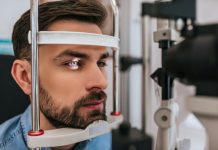
A groundbreaking study by researchers from Amsterdam UMC and Vrije Universiteit Amsterdam (VU) has revealed a biological explanation for the persistent fatigue experienced by long COVID patients.
Published in Nature Communications, the study shows that the fatigue is due to mitochondria in muscle cells producing less energy than in healthy individuals.
Michèle van Vugt, Professor of Internal Medicine at Amsterdam UMC, highlights the significant changes observed in the muscles of these patients. The study involved 25 long COVID patients and 21 healthy participants.
They were asked to cycle for 15 minutes, a test that led to a long-term worsening of symptoms, known as post-exertional malaise (PEM), in the long COVID group. PEM is characterized by extreme fatigue following physical, cognitive, or emotional exertion.
Rob Wüst, Assistant Professor at the Department of Human Movement Sciences at VU University, explained that abnormalities were found in the muscle tissue of long COVID patients.
The mitochondria, often referred to as the cell’s energy factories, functioned less effectively and produced less energy in these patients.
This discovery is crucial as it confirms that the cause of fatigue in long COVID is biological. Since both the brain and muscles require energy to function, understanding this energy deficit is key to finding appropriate treatments for long COVID patients.
One theory about long COVID is that coronavirus particles may linger in the body. However, van Vugt notes that there is no indication of this in the muscles of the patients studied.
Additionally, the heart and lungs of the patients appeared to function normally, suggesting that the long-lasting impact on fitness is not due to heart or lung abnormalities.
The study’s findings also have implications for the management of long COVID. Brent Appelman, a researcher at Amsterdam UMC, advises patients to be mindful of their physical limits and engage in light activities like walking or riding an electric bike to maintain some level of physical condition.
However, he cautions that every patient has a different threshold.
Van Vugt adds that traditional forms of rehabilitation and physiotherapy may not be beneficial and could even be counterproductive for the recovery of long COVID patients due to the potential for worsening symptoms after physical exertion.
Long COVID, or post-acute sequelae of COVID/post-COVID syndrome (PCS), affects a significant subgroup of individuals infected with the SARS-CoV-2 virus.
Symptoms include severe cognitive problems (brain fog), fatigue, exercise intolerance, autonomic dysregulation, and postural orthostatic tachycardia syndrome (POTS), among others.
This study is a major step forward in understanding and treating long COVID.
By identifying the biological basis of one of its most debilitating symptoms, researchers have opened the door to developing targeted therapies and rehabilitation strategies that could greatly improve the quality of life for those suffering from this condition.
If you care about COVID, please read studies about Vitamin D deficiency linked to severe COVID-19, and how diets could help manage post-COVID syndrome.
For more information about COVID, please see recent studies about new evidence on rare blood clots after COVID-19 vaccination, and results showing zinc could help reduce COVID-19 infection risk.
The research findings can be found in Nature Communications.
Copyright © 2023 Knowridge Science Report. All rights reserved.



